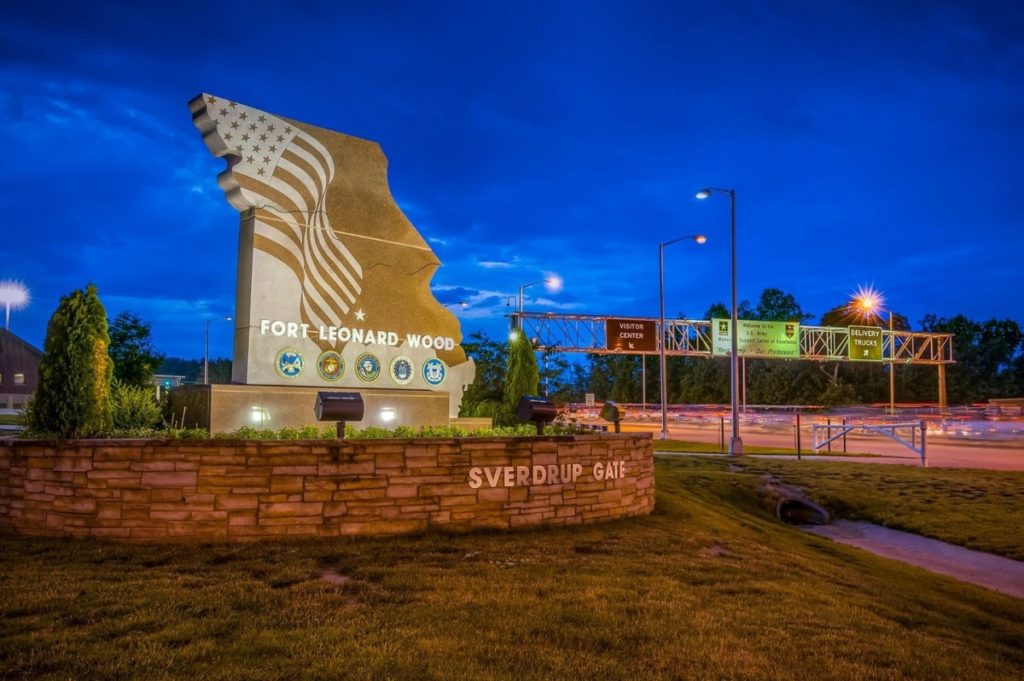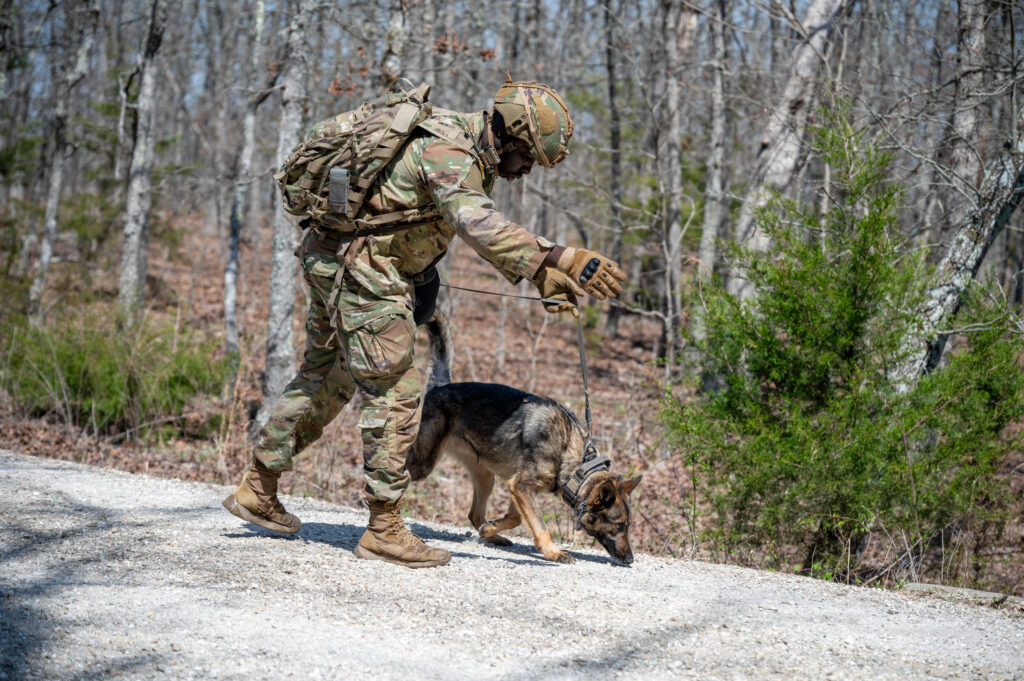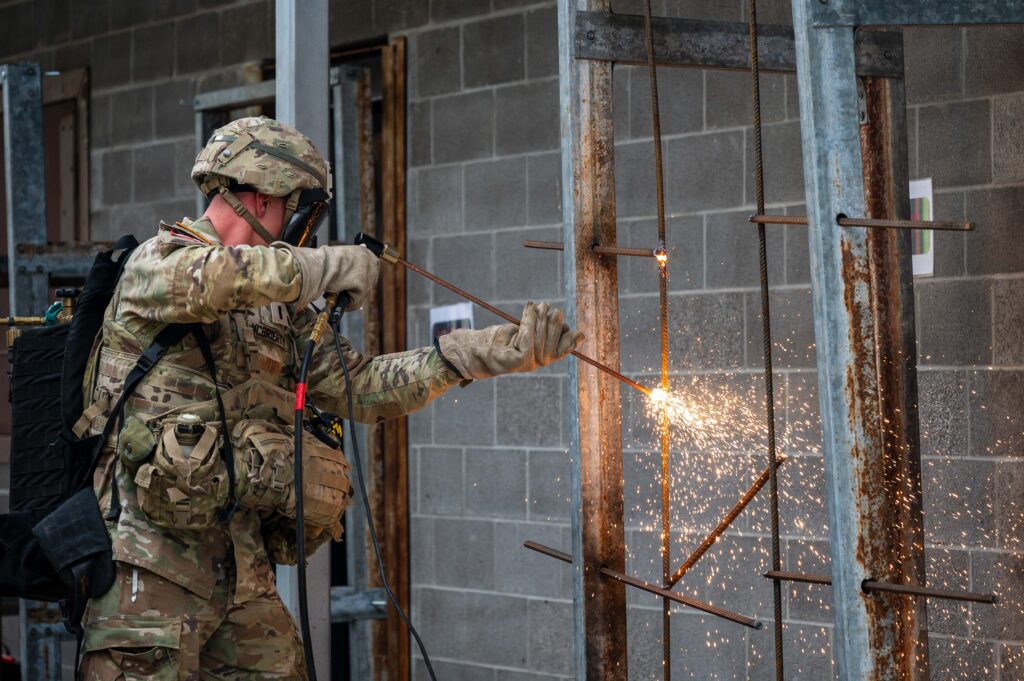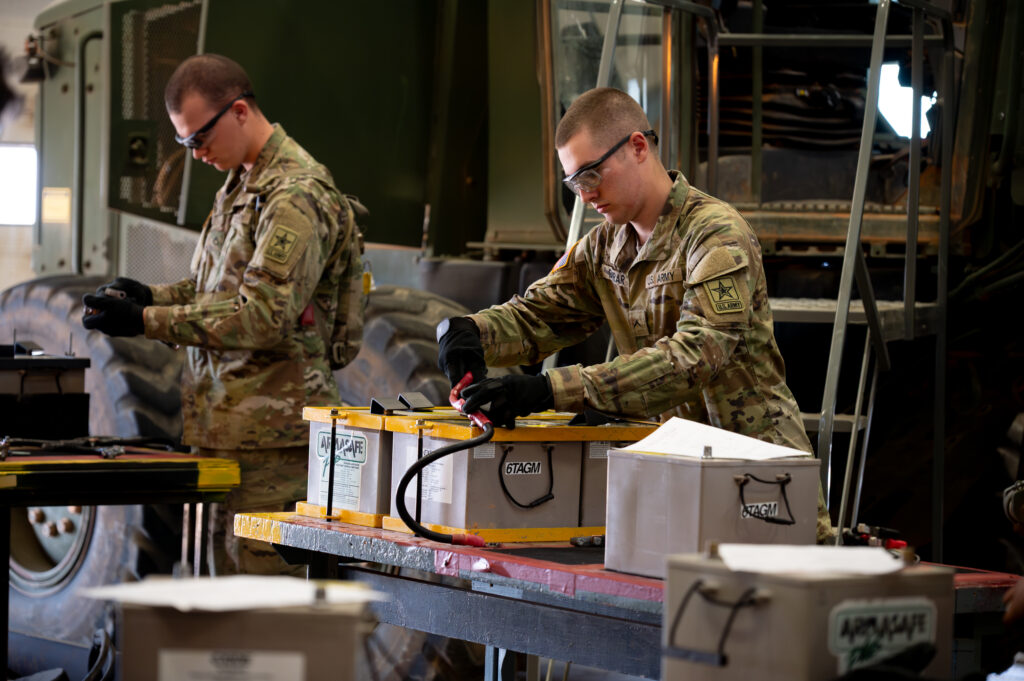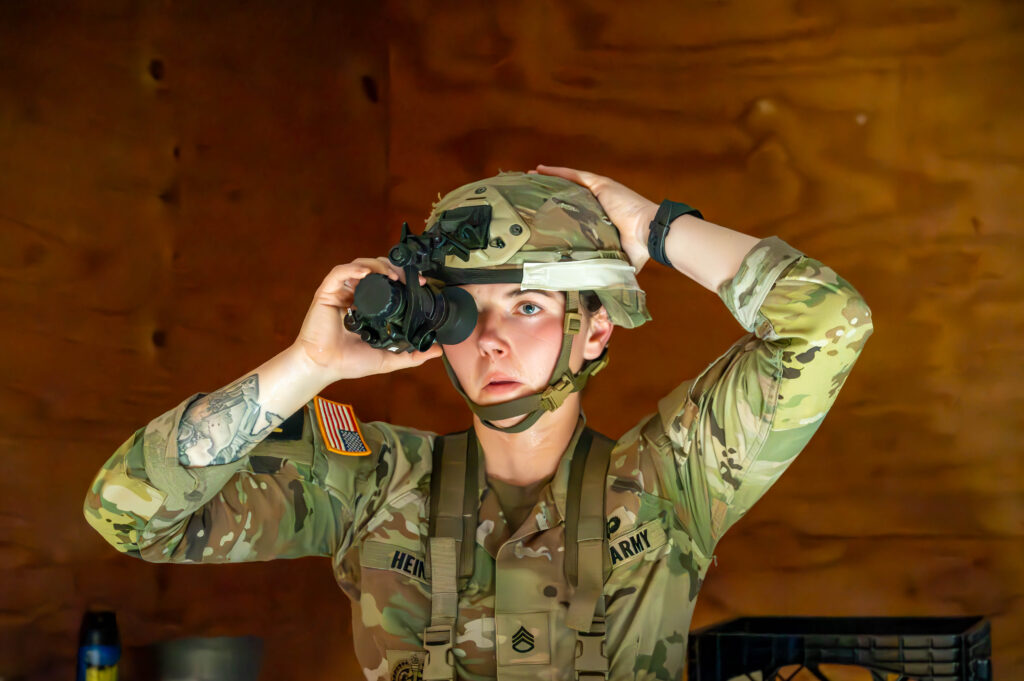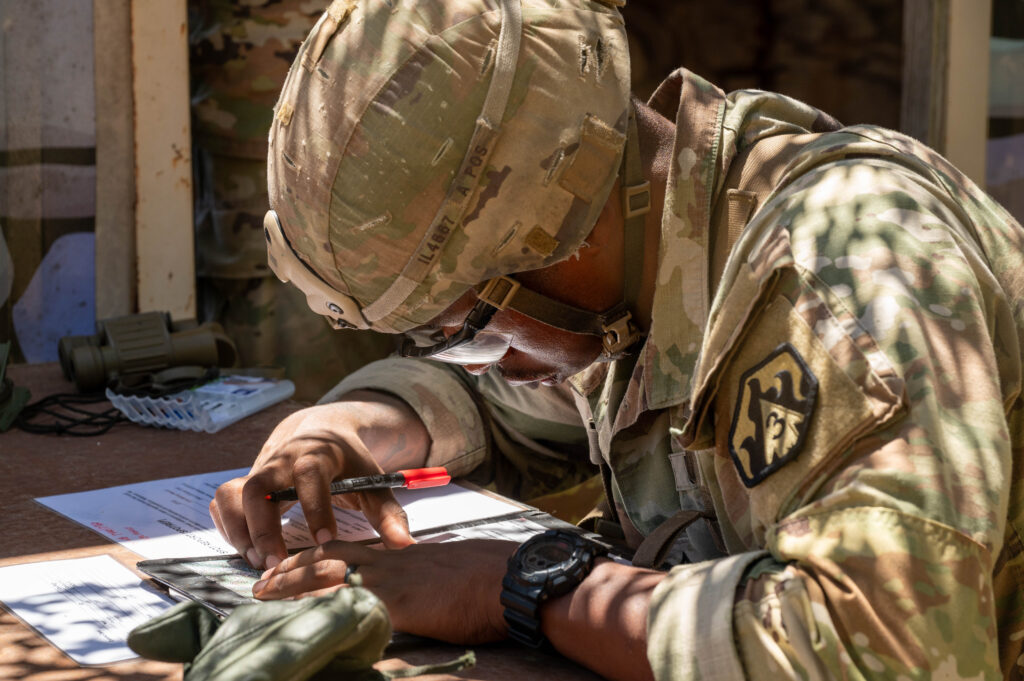Matt Decker
FORT LEONARD WOOD, Mo. (Oct. 21, 2020) — With the snip of a blue ribbon, the Marine Corps Police Academy opened Oct. 15 in Bldg. 1706 on Fort Leonard Wood, the culmination of an intense, 18-month project to relocate the school here from Marine Corps Air Station Miramar in San Diego, California.
“This is a testament that the military is able to do rapid planning, rapid execution, rapid acquisition — that we can do this. It just takes us, working together, to make it happen,” said keynote speaker Marine Col. Bernard Hess, Head of Law Enforcement, Investigations and Corrections Branch, Security Division, Plans, Policies and Operations, Headquarters Marine Corps.
According to Gregg Thompson, Maneuver Support Center of Excellence deputy to the commanding general, the decision to move the facility here serves a two-fold purpose: saving the Department of Defense about $4.5 million per year and giving students of the academy, which instructs civilian police serving on Marine Corps installations, access to state-of-the-art training facilities at the home of the U.S. Army Military Police School. He described the relocation as, “a fantastic next step in an ever-growing partnership” between Fort Leonard Wood and the Marine Corps.
“The academy will serve as another venue through which we can share both our land and our resources with our interagency and our interservice partners,” Thompson said. “This move improves our ability to share our ideas and best practices … and results in better leaders and trained professionals who will make positive contributions to the safety and security of Marines and their families. … We’re proud to serve with our Marine Corps teammates and are excited to begin this latest chapter in our rich history together.”
Maceo Franks, program manager for the Marine Corps Law Enforcement Program and head of the Supporting Establishment Law Enforcement Program, said the academy will train up to 300 students per year here.
“Our police officers, as required by law, must receive at least 400 hours of law-enforcement training,” Franks said. “The primary mission for our academy is that we provide entry-level training for our police officers, and also advanced law-enforcement training for our officers, too. This includes everything from special reaction-team training to leadership training in the way of watch-commander, desk-sergeant and field-officer training, and we also offer training to enhance their overall job performance by being assigned to an installation.”
He said academy students will literally “do everything” available to police in training on Fort Leonard Wood as part of their studies.
“Everything from standing the gate at entry control to operations to conducting patrol (operations) to responding to domestics to responding to an active threat,” Franks said. “They get all that, and they get various certifications that make them fully qualified to be law-enforcement officers when they graduate from here.”
For the 20 instructors who will teach academy students, the ribbon-cutting was an eagerly anticipated milestone that coincided with the arrival of the first class of students later that day, according to Richard Holman, the school’s director of training.
“These guys are chompin’ at the bit to start teaching,” he said.
Holman, who previously taught at the academy at Miramar and its original headquarters at Camp Lejune, North Carolina, said the Fort Leonard Wood facility is second to none.
“This is the nicest facility I’ve ever taught in, and I’ve taught at all the other academies,” he said. “It’s tremendous. So, this means the world to me.”
Holman said the facilities and the training opportunities available on Fort Leonard Wood will allow his students to be more well-rounded police officers when they graduate.
“The technology we have today — this will be the first time the Marine Corps students have had a chance to use the newer technology. It should produce a better basic-trained police officer,” he said.
Col. William Hannan, U.S. Army Corps of Engineers Kansas City District commander, told audience members that getting the academy ready in time presented his team with several challenges, which they met with help and cooperation from multiple agencies.
“This project was first brought to us at the end of the 2019 fiscal year, and I must admit when I told my team I wanted to get this done, a couple of them looked at me and said, ‘Sir, we can’t do that. It’s impossible.’” Hannan said. “And I said, ‘Well, we’ve got to make it — this is important to Fort Leonard Wood.’ So, the team really pulled together, figured it out and got this project done in record time.
It’s just a testament to all those other partnerships — working with the Marine Corps to work through issues, working with the team with (the Directorate of Public Works), working with our contractor — everything went extremely well. Really, everyone worked together and overcame all challenges.”
Hess praised the Corps of Engineers’ work, and thanked a long list of leaders, units, organizations and individuals who contributed to the project.
“Let me address everyone who has had a hand in making this relocation possible: Please, everyone who was part of this endeavor, please accept a very simple but sincere and humble ‘thank you’ for your efforts to make this a reality here today,” Hess said.
“This was similar to a PCS move for us, as we picked up our academy and moved it here. I am so excited to see how the next chapter of this Marine Corps and U.S. Army partnership is going to play out,” he added.


-30-
About Fort Leonard Wood
Fort Leonard Wood is a thriving and prosperous installation that has evolved from a small basic training post more than 75 years ago to a premier Army Center of Excellence that trains more than 80,000 military and civilians each year.
Fort Leonard Wood is home to the U.S Army Maneuver Support Center of Excellence and three U.S. Army schools: the U.S. Army Engineer School; U.S. Army Chemical, Biological, Radiological and Nuclear School; and the U.S. Army Military Police School. In addition to training engineer, CBRN and military police specialties for the Army, Fort Leonard Wood also provides gender-integrated in-processing and Basic Combat Training for new Soldiers.
Fort Leonard Wood also hosts and trains with the largest Marine Corps Detachment and Air Force Squadron on any Army installation as well as a large Navy construction detachment.
More information about Fort Leonard Wood is at: https://home.army.mil/wood/index.php/about/mission
